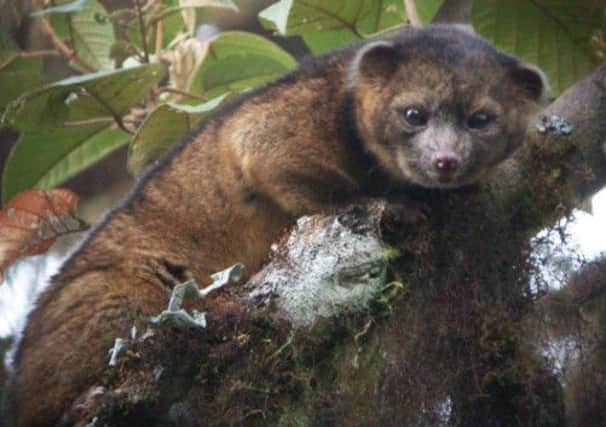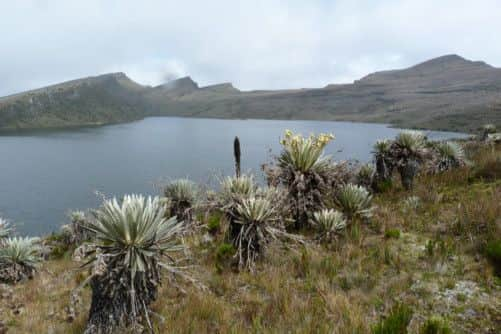Colombian biodiversity hotspot needs Scotland’s help


The international drugs trade and social unrest may not obviously spring to mind as day-to-day concerns for a botanical research institute, yet they are pivotal in the race to protect one of the world’s most important biodiversity hotspots.
Despite its relatively small size, Colombia is the second most biologically diverse country on Earth: home to about 10 per cent of the world’s mammals, birds, amphibians, reptiles, fish – and plants. It is also losing vast swathes of natural forest every year, primarily from agricultural expansion, logging, mining and industry. The race is on to reverse the trend.
Advertisement
Hide AdAdvertisement
Hide AdThe challenges facing the habitats of Colombia have long been known. But the difficulties of working in a country suffering from significant political and social unrest mean very few of the world’s major botanical research institutes have been active there for many years.


Recently, however, thanks to advances in the peace process, biologists are starting to return. Royal Botantic Garden Edinburgh (RBGE) has led the way, developing a botanical research programme that is unrivalled outside of Colombia.
Also, by January, we will have six Colombian PhD students with us in Edinburgh investigating the evolution of plants in their own country.
World’s fastest-evolving and coolest biodiversity hotspot
Their engagement comes at a crucial time. Working with Colombian botanists Professor Santiago Madriñán, of the University of the Andes, Bogotá and Andres Cortés, of the University of Uppsala, Sweden, we have determined that the rate of plant species evolution in the isolated “sky islands” of Páramo in the Andes means that it is the world’s fastest-evolving and coolest biodiversity hotspot – and it’s in trouble.
Covering less than half the area of Scotland, it is home to some 3,500 species. Many of the reservoirs servicing Colombia’s major cities are located within Páramo vegetation that provides a valuable ecosystem service by acting like a sponge, retaining and filtering the water supply for millions of people.
Yet, despite its importance, this vegetation is severely threatened by habitat loss through agricultural expansion, mining activities and climate change.
Increasing temperatures for example, can be expected to force Páramo plants to migrate to higher altitudes until they have nowhere left to go.
The loss of this holding capacity will not only endanger the water supply, it could lead to increased flooding in the plains of Bogotá that have already been extensively damaged by inundation.
Advertisement
Hide AdAdvertisement
Hide AdIt’s not just plants that will disappear. We have only recently come to know the Olinguito, for example. This new species of carnivore, related to and similar in size to a raccoon, has been officially documented as an exciting case in point that new mammal species can still be discovered in regions such as the Andes.
Should ecosystems such as the Páramo disappear, who knows just how many other species would be threatened, or simply disappear before they are even found?
Devastation caused by cocaine trade
Research alone is not enough. Action is required. That is why, as we prepare to welcome the next generation of Colombian scientists to Edinburgh, we are also working with partner authorities to raise awareness of the environmental devastation caused by the cocaine trade.
With recent news reports indicating that illegal drugs are now cheaper and purer globally than at any time over the last 20 years, there are suggestions that the war on drugs has so far failed.
Certainly, the demand for cocaine and the illicit trade of the product has enormous social impact in Colombia, funding armed groups, causing forced displacement and fuelling violence and corruption.
Against this backdrop, it is a little-known and rather uncomfortable fact that Scotland has the highest per capita consumption of cocaine in the world.
That is why RBGE is working with Shared Responsibility, a programme established by the Colombian Government and the United Nations Office on Drugs and Crime to educate Scottish schoolchildren and young adults about the environmental impacts of illicit coca cultivation. We need to alert those who believe no harm is done indulging in the drug that over 2.2 million hectares of forest have already been destroyed for production of the coca plant.
By turning their backs on any invitation to take cocaine, ordinary Scots can help stop the destruction.
Advertisement
Hide AdAdvertisement
Hide AdShared Responsibility demonstrates how personal choices we make here can impact the quality of life of people in Colombia. That could be a small but vital step forward for biodiversity conservation.
• James Richardson is lead researcher of tropical biogeography and evolution at RBGE and adjunct professor at the University of the Andes, Bogotá, Colombia.